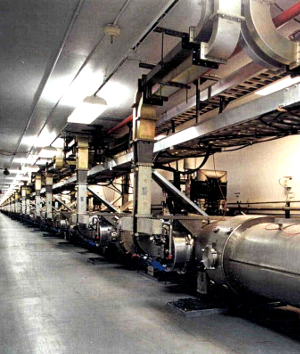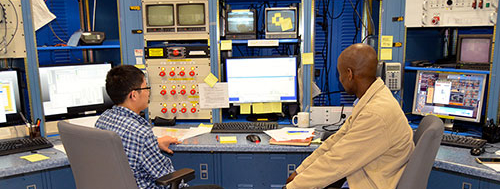Super laser burns path to new knowledge
 A lab in the US has fired its new 12 gigaelecton-volt laser.
A lab in the US has fired its new 12 gigaelecton-volt laser.
The massive ray is at the centre of upgrades to the Continuous Electron Beam Accelerator Facility (CEBAF) at the US Department of Energy's Thomas Jefferson National Accelerator Facility, known as the ‘Jefferson Lab’.
The CEBAF accelerator delivered the highest-energy electron beams it has ever produced, fired into a target in an experimental hall to record the first data.
The incredible accelerator will be able to deliver electron beams measuring 12 GeV, or 12 billion electron-volts.
The machine sent electrons around their custom racetrack three times (known as “3-pass” beam), resulting in 6.11 GeV electrons at 2 nano-Amps average current for more than an hour.
“This achievement is a major milestone... although it's early yet as far as delivering beam for experiments, we are beginning to see the flowers that will become the fruits of our labours from this upgrade,” said Hugh Montgomery, Jefferson Lab director.
The CEBAF accelerator is a superconducting accelerator designed to deliver beams into the nuclei of materials for nuclear physics experiments.
A project was launched in 2008 to double the potential of the accelerator’s beam up to 12 GeV. The upgrade has cost $338 million over the years since, including the better beam and more facilities for labs and equipment.
The recent milestone has been defined as “events recorded from beam-target interactions using ... spectrometer detector systems with 3-pass > 6 GeV beam energy and at least 2 nano-Amps average beam current.”
“We were here for it, but it really could have been any combination of our chiefs, operators and deputies, because we have put together such a great group of co-workers and colleagues,” Arne Freyberger, Accelerator Operations manager and the program deputy on shift, commented.
Delivering the high level of beam energy was the first demonstration of the laser beyond the original accelerator's operational energy.
The achievement heralds the first shots fired for nuclear physics experiments in the 12 GeV era.
These first experiments will provide higher precision measurements of the structure of the proton and other sub-atomic particles. Experiments will be run in new laboratory areas.







 Print
Print